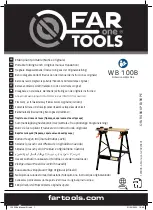
RELIABILITY: THE HEART OF THE DLTtape SYSTEM
5.8
Adaptive Cache Buffering
DLTtape drives feature adaptive cache buffering, which helps
reduce stops and starts, reducing drive wear and tear. Adaptive
techniques enable the DLTtape system to adjust block sizes to
match the host data rate. If compression is on, data is compacted
as it enters the cache buffer at a rate that matches as closely as pos-
sible the rate at which it is written to tape. While the total through-
put rate is dependent on how fast the host can supply data to the
DLTtape drive, adaptive cache buffering helps keep the drive
streaming as much as possible, and reduces delays due to reposi-
tioning. In addition, parity is maintained between the host system
and the DLTtape drive over the SCSI interface.
Duty Cycle
Most drive makers base their performance and reliability figures
on drive utilization (duty cycle) as low as 10 percent. That means
that in a 7x24 operation, other drive makers base reliability figures
on as little as 2.5 hours of use during every 24-hour period. At
Quantum, we calculate most reliability figures based on 100 per-
1
5
9
7
11
12
13
10
6
2
3
4
8
Channel 1
Channel 2
Channel 3
Channel 4
12
15
ECC1
7
11
14
16
ECC2
ECC3
ECC4
ECC4
Direction of Tape Motion
Figure 5-6 Parallel Channel Architecture
on all DLTtape
drives (DLT 8000 shown here) automatically transfers data from
bad blocks to parallel channels for "on the fly" data recovery.
















































